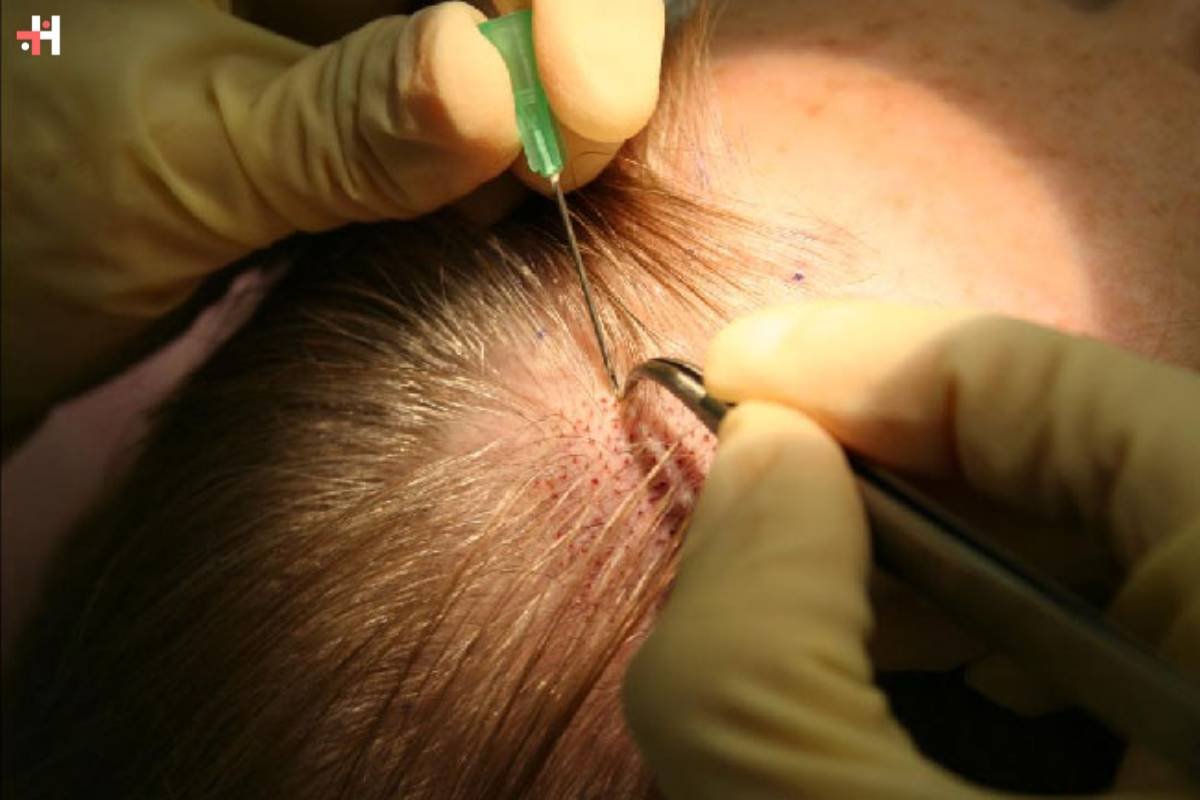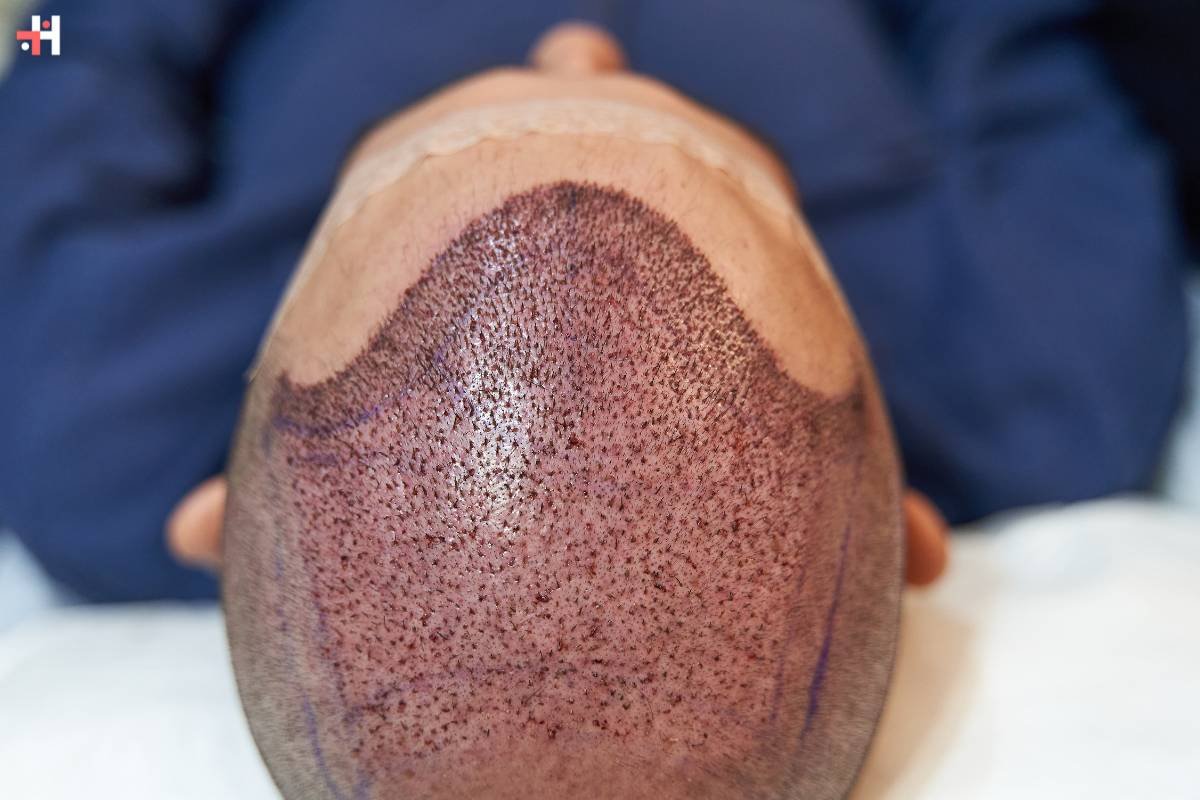Hair loss is a common issue that affects millions of people worldwide. While some individuals embrace baldness, others seek solutions to restore their hair and confidence. One popular option for hair restoration is a hair transplant. In this comprehensive guide, we will explore everything you need to know about hair transplant procedures, including how they work, their benefits, potential risks, and what to expect during the recovery process.
Understanding Hair Transplant:
It is a surgical procedure designed to restore hair in areas of the scalp with thinning or balding hair. The procedure involves extracting hair follicles from donor areas, typically the back or sides of the head, and implanting them into the recipient area where hair loss has occurred. There are two primary methods of hair transplant: Follicular Unit Transplantation (FUT) and Follicular Unit Extraction (FUE).
The Procedure:
a. Follicular Unit Transplantation (FUT):
- In FUT, a strip of scalp containing healthy hair follicles is surgically removed from the donor area.
- The donor strip is then dissected under a microscope to separate individual hair follicles.
- Tiny incisions are made in the recipient area, and the follicles are implanted one by one.
- FUT leaves a linear scar in the donor area, which is typically concealed by surrounding hair.
b. Follicular Unit Extraction (FUE):

(Source – Belgravia Centre)
- FUE involves the extraction of individual hair follicles from the donor area using a small punch tool.
- The follicles are then implanted into the recipient area using a similar technique as FUT.
- FUE does not leave a linear scar and allows for quicker recovery compared to FUT.
Benefits:
- Natural-Looking Results: It procedures produce natural-looking results, as the transplanted hair grows and blends seamlessly with existing hair.
- Permanent Solution: Unlike temporary hair loss treatments, hair transplant provides a permanent solution to hair loss, making it a cost-effective option in the long run.
- Improved Self-Esteem: Restoring a full head of hair can significantly boost self-confidence and improve overall quality of life for individuals experiencing hair loss.
- Minimal Downtime: With advancements in technology and techniques, modern hair transplant procedures offer minimal downtime and faster recovery compared to traditional methods.
Risks and Considerations:
While it is generally considered safe, it is essential to be aware of potential risks and considerations associated with the procedure:
- Infection: Like any surgical procedure, there is a risk of infection following hair transplant surgery.
- Scarring: While FUE minimizes visible scarring, FUT may leave a linear scar in the donor area, which can be noticeable if the hair is cut short.
- Bleeding and Swelling: Some patients may experience temporary bleeding and swelling in the donor and recipient areas following surgery.
- Hair Thinning: In rare cases, transplanted hair may thin over time, requiring additional procedures to maintain desired results.
Preparations:
- Consultation: Schedule a consultation with a qualified hair transplant surgeon to discuss your goals, medical history, and expectations.
- Medical Evaluation: Undergo a thorough medical evaluation to ensure you are a suitable candidate for hair transplant surgery.
- Quit Smoking: If you smoke, consider quitting before undergoing hair transplant surgery, as smoking can impair healing and increase the risk of complications.
- Follow Pre-Operative Instructions: Your surgeon will provide specific pre-operative instructions, such as avoiding certain medications and alcohol consumption before surgery.
Recovery Process:

- Immediately after Surgery: Following hair transplant surgery, you may experience mild discomfort, swelling, and redness in the donor and recipient areas. Your surgeon may prescribe pain medication and recommend applying cold compresses to alleviate discomfort.
- First Few Days: It is essential to follow post-operative instructions provided by your surgeon, such as avoiding strenuous activities and protecting the transplant area from trauma.
- Weeks Following Surgery: Most patients can resume normal activities within a few days to a week after hair-transplant surgery. However, it may take several weeks for the transplanted hair to shed and begin regrowing.
- Long-Term Care: To maintain optimal results, it is crucial to follow long-term care instructions provided by your surgeon, such as avoiding exposure to direct sunlight and using gentle hair care products.
Cost Considerations:
- Its costs vary depending on factors such as the extent of hair loss, the number of grafts required, and the surgeon’s expertise.
- While a transplant surgery may seem expensive upfront, it is essential to consider the long-term benefits and savings compared to ongoing expenses associated with temporary hair loss treatments.
- Some insurance plans may cover a portion of the cost of hair transplant surgery, especially if it is deemed medically necessary to treat conditions such as alopecia.
Types of Techniques:
- Besides FUT and FUE, there are other specialized techniques and variations of hair-transplant procedures available, such as Direct Hair Implantation (DHI) and Robotic Hair Transplantation.
- DHI involves the use of a specialized implanter tool to insert hair follicles directly into the recipient area without the need for prior incisions, resulting in minimal trauma and faster healing.
- Robotic hair transplant procedures utilize advanced robotic technology to automate the process of follicle extraction and implantation, offering precision and consistency in graft placement.
Hair Transplant for Women:
- While hair loss is more commonly associated with men, many women also experience thinning hair and hair loss due to factors such as hormonal changes, genetics, and aging.
- It procedures can be effective for women seeking to restore lost hair and improve hair density, particularly in the frontal hairline and crown areas.
- Female-pattern hair loss, also known as androgenetic alopecia, may benefit from hair-transplant surgery, although it is essential to undergo a thorough evaluation to determine candidacy and expectations.
Alternative Hair Restoration Options:
- In addition to surgical transplant procedures, there are non-surgical options available for hair restoration, such as platelet-rich plasma (PRP) therapy and low-level laser therapy (LLLT).
- PRP therapy involves the injection of concentrated platelets from the patient’s blood into the scalp to stimulate hair growth and improve hair thickness.
- LLLT utilizes low-level laser devices to stimulate hair follicles, promote circulation, and enhance hair growth, often used as a complementary treatment to surgical hair transplant procedures.

Psychological Impact of Hair Loss:
- Hair loss can have a profound psychological impact on individuals, affecting self-confidence, body image, and overall quality of life.
- Many people experiencing hair loss may feel self-conscious and insecure about their appearance, leading to social withdrawal and avoidance of certain activities.
- Hair restoration procedures such as hair transplant surgery can address not only the physical aspects of hair loss but also the emotional and psychological well-being of individuals, restoring confidence and self-esteem.
Research and Advancements:
- Ongoing research and advancements in hair transplant technology and techniques continue to improve the safety, efficacy, and outcomes of hair restoration procedures.
- Emerging technologies such as stem cell therapy and tissue engineering hold promise for enhancing hair growth and regenerative potential, potentially revolutionizing the field of hair restoration in the future.
- Collaborations between scientists, surgeons, and industry professionals aim to develop innovative solutions for addressing various types of hair loss and improving patient satisfaction and quality of life.
Conclusion:
It offers a permanent solution to hair loss, providing natural-looking results and improved self-esteem for individuals seeking to restore their hair. By understanding the procedure, its benefits, and potential risks, you can make an informed decision about whether hair-transplant is the right option for you. If you’re considering hair transplant surgery, consult with a qualified hair transplant surgeon to discuss your options and develop a personalized treatment plan tailored to your needs.










